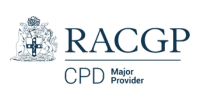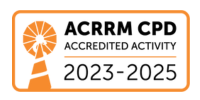Even the most seasoned skin cancer GPs face surgical grey zones: those moments where the tumour...
.jpg?height=200&name=HCE%20HubSpot%20blog%20images%20600x350%20(24).jpg)
Improve patients' quality of life through effective prevention and management of respiratory illnesses.

Manage common respiratory illnesses, including asthma, COPD, sinusitis, lung cancer, and upper respiratory tract infections.
- This course is for physicians, nurse practitioners, and degree-qualified nurses.
- CPD-accredited.
100% online
$1095
Special rates available
40.5 hrs
Self-paced
- Reduce costs and hospital admissions for patients with chronic respiratory problems.
- Save lives through the early detection and prevention of potential complications associated with lung diseases.
- Improve patients' quality of life by treating respiratory conditions in-house and reducing referrals.
Get unlimited access to all course content, additional learning materials, ongoing post-course support, and more.
This module commences with the description and epidemiology of asthma. The history, pathogenesis and a range of risk factors are outlined. An overview of the diagnosis and evaluation of patients with asthma also includes mimics of asthma symptoms. Diagnosis and management for adolescents and adults including diagnostic tools are outlined then moves to the diagnosis, diagnostic tools and management of asthma in infants and children. Red flags to look for are described. The module concludes with information on thunderstorm asthma, asthma emergencies, acute asthma in primary care, vaccination and lists available asthma resources.
This module discusses COPD and the possible contributing heterogenous group of associated processes. Characteristics, aetiology, pathogenesis and the burden of this disease are outlined. Each stage of the COPD-X guidelines: Case finding and confirm diagnosis, Optimise function, Prevent deterioration, Develop a plan of care and manage eXacerbations are explained in detail, including investigations, impact assessment, the overlap of asthma and COPD and measuring severity. Barriers to COPD diagnosis are detailed. Management options to optimise lung function and prevent deterioration including lifestyle factors, immunisation and pharmacotherapy options are outlined. Comorbidities associated with patients with COPD are detailed and referral options outlined. The module also includes palliative care options. The module concludes with a summary of take home messages.
This module begins with explaining the purpose of sinuses and how sinusitis can develop. Contributing risk factors and presenting symptoms are outlined. Examination rules are described for the nose, throat, ears and lungs including red flags for infection. Awareness of the stages of sinusitis, classifications and investigation options determine management options. Management options are detailed including nasal sprays, reducing inflammation, treating the underlying cause and safety netting at each step. Onward referral information is included. Prevention strategies and potential complications are outlined that consider other contributing factors that may lead to an alternative diagnosis. The module concludes with a clinical case example that reinforces the course content.
This module begins with an overview of URTIs including the anatomy of the upper respiratory tract. Common infections are outlined including their pathophysiology, clinical manifestations, differential diagnosis and treatment options. These infections include rhinitis, sinusitis, ear and mastoid, pharyngitis, tonsilitis, deep neck, laryngitis, croup and epiglottitis. The various severity levels of each of these conditions is described to assist with determining management options.


Beginning her medical career in Mumbai, India, Dr Vaishali Bhalerao has 22 years of knowledge and experience to impart. She completed her master's degree and went on to establish her own private practice, which she ran successfully for 15 years. During this period she also worked as Associate Professor in a state government hospital.
Before coming to Australia, Dr Bhalerao worked in one of the NHS hospital in the UK and since arriving in Australia in 2011 she has worked in various hospitals in Tasmania and Victoria including Mercy Werribee Hospital and Sunshine Hospital.


Bundle two courses and save 5%, or three courses and save 10% upon enrolment.
Talk to us about deferred payment options, registrar scholarships and special rates.
*For Australian residents only: Online course prices are shown exclusive of GST. If you are GST-registered, please enter a valid ABN at checkout to ensure GST is not applied. Otherwise, 10% GST will be added at checkout. View our FAQ for more information.

Great course! it is very relevant to all practising GPs. Who knew that there is a pathologist "secret". Every GP should know this!
Dr M. Parashar
Highly satisfied. Real patients and cases enhance the learning experience. I will attend the advanced course.
Dr N. Kazi
Don't miss this course! It's interesting, practical and enjoyable. After attending courses for 30 years, I rank this as number one. The course is very useful to all doctors who diagnose and treat skin lesions. Top marks to the organisers.
Dr P. Laundy
Everything was very relevant and easy to understand. Certainly in a very different league to all the other courses I have attended.
Dr M. Kaur
I wish I had completed this course two years ago. My time in general practice so far has not enhanced my diagnostic or surgical skills and I have been scared about skin checks! I actually feel not only confident but empowered. A fantastic course! Thank you!
Dr A. Mooney
HealthCert courses have become the standard by which you gauge all others.
Dr K. Abolarinwa
Good, courses with excellent speakers. I particularly enjoyed the case study scenarios which helped to integrate the knowledge gained.
Dr A. Tucker
This is the pathway to improve your confidence and evolve into the GP you aspire to be.
Dr S. Shinwari
| RACGP Activity Number | ACRRM Activity Number | Activity Title | Education Hours | Performance Hours | Outcome Hours | ||
|---|---|---|---|---|---|---|---|
| 441343 | 31081 | Chronic Obstructive Pulmonary Disease (COPD) | 441343 | 31081 | 4.5 | 6 | 0 |
| 549756 | 31271 | Sinusitis | 549756 | 31271 | 4 | 6 | 0 |
| 549750 | 31270 | Asthma | 549750 | 31270 | 4 | 6 | 0 |
| 549760 | 31272 | Upper Respiratory Tract Infection | 549760 | 31272 | 4 | 6 | 0 |
| Total hours | 16.5 | 24 | 0 | ||||
View the CPD Hours for all HealthCert Education activities.
HealthCert Education provides a variety of Outcome Measurement activities to suit your needs. Please contact an Education Advisor for more information.
The Foundation Certificate of Respiratory Conditions & Infections is tailored for medical practitioners who wish to improve patients' quality of life through effective prevention and management of respiratory illnesses.
This course is for physicians, nurse practitioners, and degree-qualified nurses. There are no prerequisites.
Participants will require access to a computer/laptop, an internet connection and a basic level of technology proficiency to access and navigate the online learning portal.
Participants who have already successfully completed the module on Chronic Obstructive Pulmonary Disease as part of the HealthCert Professional Certificate of Chronic Disease & Conditions may request a one-module reduction in fees for this course. The module examination questions will still need to be completed to ensure knowledge remains current.
Further professionally recognised qualifications and prior studies may be recognised for entry into this course if the learning outcomes match exactly. Please ask a HealthCert Education Advisor for an individual assessment of your prior qualifications and experience.
Upon successful completion of the course, participants will receive a Foundation Certificate of Respiratory Conditions & Infections and CPD hours.
This certificate course:
To learn more about the delivery of certificates in Australia and overseas, please visit our FAQs.
This organisation is an RACGP-accredited CPD provider under the RACGP CPD Program.



Don't see your question? Explore other faqs or talk to us.
Fees will vary based on the program and study option selected (fully online vs online + optional practical workshop). Payments can be made upfront or in monthly instalments. Special rates and various payment options are available. GP registrars and doctors in training enjoy a scholarship of up to $500. Talk to us to learn more.
Completion of any HealthCert course or attendance at an event will enable you to access the HealthCert Alumni Program which includes:
HealthCert Education is pleased to issue digital credentials for alumni. Digital credentials are a permanent online record of your successful completion of a HealthCert course and are issued to all course participants in addition to PDF certificates. If you are based in Australia, you also have the option to order a hard copy of your digital certificate for a small additional fee.
The recommended study duration of this certificate course is 40.5 hours, which includes study of the pre-course activities and readings, online lectures, live tutorials, and online assessment. This self-paced course offers the flexibility of 100% online study in your own time, at your own pace, in your own home or office, with no mandatory face-to-face requirements. You are not required to be online at specific times but can view and replay video lectures at your convenience.
All HealthCert courses meet World Federation of Medical Education standards. This certificate course qualifies for CPD hours from the Royal Australian College of General Practitioners (RACGP) and the Australian College of Rural and Remote Medicine (ACRRM) in Australia. It is recognised by the Royal New Zealand College of General Practitioners (RNZCGP) in New Zealand. It is recognised by the Hong Kong College of Family Physicians (HKCFP) in China. It is a self-submitted activity in Dubai and the United Kingdom. It is a self-submitted activity through the College of Family Physicians in Canada. If you live or work outside one of the above-mentioned countries, please contact us on admin@healthcert.com to discuss whether this course can be recognised in your country.
Want to stay up-to-date with the latest case studies, podcasts, free video tutorials and medical research articles pertinent to primary care?
Our Education Advisors can assist you with any queries and tailor our education pathway to suit your current expertise, interests and career goals.